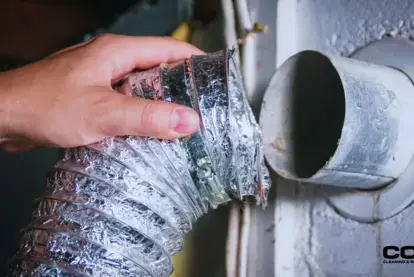
How to Get Blood Out of Upholstery (Fresh and Dried Stains)
Contact COIT for a professional cleaning!
Blood stains on your couch or favorite chair aren’t just an eyesore—they can also be surprisingly tough to remove, especially if they’ve had time to set. Whether you’re dealing with a fresh nosebleed or an old stain that just won’t budge, we’re here to help.
At COIT, we’ve cleaned thousands of pieces of furniture, and we know what works and what doesn’t.
In this guide, we’ll walk you through how to get blood out of upholstery step by step, using simple ingredients you likely already have at home. And if DIY doesn’t do the trick, don’t worry—we’ll also explain when to call in a professional.
Why Upholstery Blood Stains Are So Tricky
Blood contains proteins that bond to fabric fibers quickly, and the longer it sits, the deeper it sets and the harder it becomes to lift without damaging the upholstery. Unlike clothing, you can’t just throw a couch cushion in the washing machine. That’s why it’s so important to act fast and treat the stain carefully.
First, Identify the Stain Type
Fresh blood and dried blood require different approaches. Fresh stains are usually easier to lift, while dried ones need more patience (and maybe a little extra elbow grease).
Take a moment to check:
- Is the stain still damp to the touch?
- Has it darkened and dried?
If it’s dry and crusty, skip ahead to the dried blood section.
How to Remove Fresh Blood Stains from Upholstery
Step 1: Blot the Area
Using a clean white cloth or paper towel, gently blot the bloodstain. Do not scrub. Scrubbing can spread the stain and push the blood deeper into the fibers. Always use cold water—hot water will set the stain permanently.
Step 2: Try Club Soda
Pour a small amount of club soda directly onto the stain. Let it fizz and break up the blood, then blot again. Repeat a few times as needed.
Step 3: Dish Soap Solution
In a small bowl, mix:
- 1 teaspoon of liquid dish soap (not for dishwashers)
- 2 cups of cold water
Dip a white cloth into the solution and gently dab the stain. You’ll start to see the stain transfer to your cloth. Keep blotting until the blood fades.
Step 4: Rinse and Dry
Dampen a new cloth with clean, cold water and dab the area to remove any soap residue. Then, pat the area dry with a towel.
If the stain is gone—congrats! If it’s still faint or not lifting, you might need a stronger method. Move on to the glycerin mix or try the dried stain steps.
How to Remove Dried Blood Stains from Upholstery
Dried blood is tougher to remove, but not impossible.
Start by loosening the dried blood. Take a soft-bristled brush or the edge of a dull knife and gently scrape away the crusted material. Vacuum up any loose flakes.
Now you’re ready for one of the following cleaning solutions:
Method 1: Hydrogen Peroxide (for light-colored or white upholstery only)
Warning: Hydrogen peroxide can bleach or discolor fabric. Only use it if your furniture is white or very light, and test it in an inconspicuous area first.
Dip a cotton swab or cloth in 3% hydrogen peroxide. Lightly dab the stain and let it bubble. After 30 seconds, blot the stain with a clean cloth. Repeat once or twice if needed, then rinse with cold water and pat dry.
Method 2: Glycerin + Detergent Spray
This is a gentler, fabric-safe solution you can use on most upholstery:
Mix together:
- 80% cold water
- 10% glycerin
- 10% liquid laundry detergent
Pour into a spray bottle and lightly mist the stain. Don’t over-soak. Let it sit for 5 minutes, then blot with a white cloth. Rinse with a damp sponge and pat dry.
This method works best when you’re persistent. You might need to repeat it a few times, especially for older stains.
Not Sure What Your Fabric Can Handle? Check the Tag
Before applying any cleaning solution, find the care tag on your couch or upholstered item. It usually includes a cleaning code:
- W: Water-based cleaners are safe
- S: Use solvent-based cleaners only (like dry cleaning fluid)
- W/S: You can use either
- X: Do not clean yourself—vacuum only or call a professional
When in doubt, don’t risk it. Some upholstery fabrics are extremely delicate or prone to fading.
What Not to Do
Let’s clear up a few common mistakes we see a lot of people make when trying to clean blood stains.
- Never use hot water. It sets protein stains like blood.
- Avoid scrubbing. You’ll drive the stain deeper.
- Skip colored cloths. They can transfer dye and make things worse.
- Don’t oversaturate. Too much water can cause mold or water stains in furniture padding.
These might seem like small missteps, but they can make a stain go from annoying to permanent.
When DIY Isn’t Enough: Call COIT
Some stains just don’t come out without industrial-strength equipment and years of experience. If you’ve tried every method and the stain is still lingering—or if your couch is made of a specialty fabric like velvet, suede, or silk—give us a call.
At COIT, we use professional-grade tools and cleaning solutions designed specifically for upholstery. We know how to treat each fabric type safely and effectively. Our technicians can even help eliminate lingering odors or disinfect the area if needed.
Final Takeaway
Whether your toddler had a bloody nose, your pet had a cut paw, or you had an unexpected period leak, blood stains on furniture are nothing to be embarrassed about. Life is messy. The good news is that with the right approach, most of these stains can be removed at home.
And when they can’t? We’re just one call away.
Have another stain? See our spot removal guide.
FAQs: Blood on Upholstery
Can I use hydrogen peroxide on my fabric couch?
Yes, you can use hydrogen peroxide on your fabric couch, but only if it’s light-colored or white, and the tag says W or W/S. Hydrogen peroxide can bleach darker fabrics, so always spot-test in a hidden area first before applying it to the entire stain.
What’s the fastest way to remove fresh blood?
The fastest way to remove fresh blood is by blotting with cold water. Acting quickly and using club soda or a dish soap solution can make all the difference before the stain has a chance to set into the fabric.
Does vinegar work for blood stains?
Vinegar can work for some stains, but when it comes to blood, it’s not the most effective. Blood is a protein-based stain, and solutions like soap, hydrogen peroxide, or enzyme-based cleaners typically do a better job.
Can COIT clean blood stains from suede or leather?
Yes, COIT can absolutely clean blood stains from suede, leather, and other delicate materials. These fabrics require a special touch and products that are safe for their unique texture and finish, which is exactly what we offer.
What if my furniture says ‘X’ on the tag?
If your furniture says ‘X’ on the tag, that means it should not be cleaned with water or solvents at all. In this case, vacuuming or professional cleaning is your safest option to avoid damaging the fabric.
Have another stain? See our spot removal guide. Still need help? Give us a call at 1800 FOR COIT and we’ll use our stain fighting expertise on the though stain.



